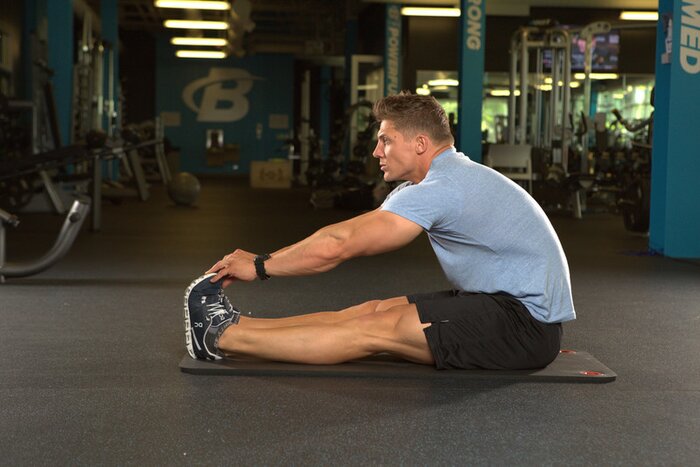Whether you call it strength, resistance, or weight training, If you only do one type of training each week then strength training should be your focus. But what exactly is strength training? The general definition of strength training is any physical movement in which you use your body weight or equipment (think dumbbells or resistance bands) to build muscle mass, strength, and endurance.(1) It is a core foundation of fitness and is essential for overall fitness and health.
Improved Strength & Fitness
This one might seem a bit obvious since “strength” is right in the name, but strength training is the best way to improve your strength and fitness levels. The amount of repetitions, or reps, you do in each set and the amount of weight you use can help determine what type of strength gains you can achieve:
- Muscular Endurance: Using high reps with lighter weight or bodyweight can help you to build up your muscles’ ability to sustain longer workouts.
- Muscular Hypertrophy: Using moderate-to-heavy weights helps drive muscle building and growth.
- Maximum Muscular Strength: Lower rep ranges (typically less 3-5 repetitions per set) with heavier weights allows you to push your top weight to keep crushing PRs.
You can also use different techniques to focus on specific fitness improvements. Circuit training is a type of full-body conditioning in which you cycle through various exercises with little to no rest between them. This helps you to build your endurance and stamina in conjunction with your strength gains. You can also do explosive power training to combine both strength and speed to increase your power output. This is a technique that competitive athletes use to improve their ability to perform explosive movements in sports – like being quick off the line for a defensive back.
Muscle Growth
Focusing on training with barbells, dumbbells, kettlebells, resistance machines, and bodyweight can drive increases in overall muscle mass and size.

After age 30, you begin to lose as much as 3% to 5% per decade. Most men will lose about 30% of their muscle mass during their lifetimes. By adding in weight training you can slow that loss. Set yourself up for success for today and the future.
Weight Management
You’ll get a great calorie burn during your workouts but the fat loss benefits don’t stop there. Building muscle helps you to burn calories more efficiently outside of the gym too. Did you know that increasing your lean muscle mass actually helps you burn more calories throughout the day? Kick up that calorie burning with a weight lifting session and reap the benefits even after your cool down ends.
Improve Mental Health & Mood
Lifting weights helps you to do more than build muscles – it allows you to improve your mood and support better mental health. Exercise releases endorphins which give you a mood boost. In addition, most athletes feel increased self-confidence from the progress they make in the gym. Hitting a PR is great for your body and your mind. It shows that you can do anything you put your mind to and gives you a sense of accomplishment and satisfaction.
Body Composition
Ever heard the dreaded saying: “I don’t want to get bulky… I just want to tone” thrown around? Well guess what – the “tone” people are looking for is muscle tone. Build muscle while burning fat to improve your overall body composition through weight training. We already covered how strength training leads to increased calorie burning throughout the day. This combined with the increase in lean muscle mass will lead to a better physique overall and can help to improve your overall body image.
Bone Health
Strong muscles lead to stronger bones. Changes in our bodies as we age – or poor lifestyle choices like inactivity or bad diet – can lead to reduced bone mass at a rate of up to 1% per year after the age of 40. This leaves the door open for injuries as you age. You can combat this decline with strength training. Exercises and activities that stress the bones prompt the body to build stronger, denser bones. Strength training targets the key areas that are prone to fractures including hips (hello deadlifts), spine, and wrists.
Improved Body Mechanics
Better flexibility, balance, posture, and coordination are also directly linked to strength training. Full range of motion through an exercise helps you to increase your flexibility and mobility. Layering in a stretch session at the end of your lift can help amplify these benefits. Posture and coordination also improve with weight training – particularly for those using free weights, barbells, and bodyweight exercises.

Reduced Injury Risk
Increased bone density and improved body mechanics from strength training also reduce your injury risk. “Having a good muscle base is important for all movement, balance, coordination and injury prevention,” explains Dr. Adam Rivadeneyra, a sports medicine physician with Hoag Orthopedic Institute in Irvine, California. “If a muscle is too weak, it puts more stress on its connecting tendon and (over time) can result in tendinitis.”
Immune Health
Your immune system also benefits from strength training since exercising helps to bolster your immune system. Exercise slows the release of stress hormones that can increase your risk of illness. Julie DeYoung, physical therapist at Clovis Community Medical Center states “When the fight or flight mechanism is left on in our bodies for too long and these chronic stress hormones are floating around, it reduces the amount of immune cells that are circulating. So it’s really important that we use exercise to manage our stress.”
Improved Sleep
Strength training can help you to fall asleep more easily and improve your overall sleep quality – leading to better recovery. The only time your body truly repairs itself is when you’re sleeping, so when you miss out on quality pillow time you miss out on a solid recovery. Hitting the weights hard during the day will help you to get in more quality sleep at night and wake up feeling refreshed in the morning.
Cardiovascular Health
When most people think of cardio they think of running long distances on the treadmill, pedaling away on a stationary bike, or swimming endless laps in the pool; however, weight training also helps to strengthen your heart and maintain a healthy weight. Multiple studies have shown an inverse relationship between strength training and heart disease. According to a 2019 study in Medicine and Science in Sports and Exercise (MSSE) performing resistance training – even under one total hour per week – was associated with a 40-70% decreased risk of cardiovascular disease.(2)
Whether you call it strength training, weight training, or resistance training, the benefits go way beyond just building muscle or losing weight. Adding in this type of exercise leads to overall improvements for your physical, mental, and general wellbeing.
Looking to get even more out of your training sessions? Check out our top proteins to support lean muscle growth, BCAAs for post-workout muscle recovery, and multivitamins to support general well-being.
Not sure how to get started? Check out our article on The Best Ways to Start a Fitness Routine and we’ll help you get started today!
Sources:
1 Suchomel TJ, Nimphius S, Bellon CR, Stone MH. The Importance of Muscular Strength: Training Considerations. Sports Med. 2018 Apr;48(4):765-785. doi: 10.1007/s40279-018-0862-z. PMID: 29372481
2 Liu Y, Lee DC, Li Y, Zhu W, Zhang R, Sui X, Lavie CJ, Blair SN. Associations of Resistance Exercise with Cardiovascular Disease Morbidity and Mortality. Med Sci Sports Exerc. 2019 Mar;51(3):499-508. doi: 10.1249/MSS.0000000000001822. PMID: 30376511; PMCID: PMC7385554
